Learn how to use permutation prompts for a more efficient and diverse approach to image generation using the Midjourney Bot. This comprehensive guide will help you understand the basics, as well as provide practical examples to maximize your creativity.
What are Permutation Prompts?
Permutation Prompts allow you to quickly generate variations of a Prompt with a single /imagine command. By including lists of options separated with commas , within curly braces {} in your prompt, you can create multiple versions of a prompt with different combinations of those options. This feature is only available for Pro Subscribers using Fast mode.
Permutation Prompt Basics
Separate your list of options within curly brackets {} to quickly create and process multiple prompt variations. For example:
/imagine prompt a {red, green, yellow} bird
This command creates and processes three Jobs:
/imagine prompt a red bird
/imagine prompt a green bird
/imagine prompt a yellow bird
Each Permutation Prompt variation is processed as an individual Job, consuming GPU minutes. Combo Prompts that create more than five Jobs will show a confirmation message before they begin processing.
Permutation Prompt Examples
Prompt Text Variations
The following prompt will create and process four Jobs:
/imagine prompt a naturalist illustration of a {pineapple, blueberry, rambutan, banana} bird
Resulting in images for each fruit bird:
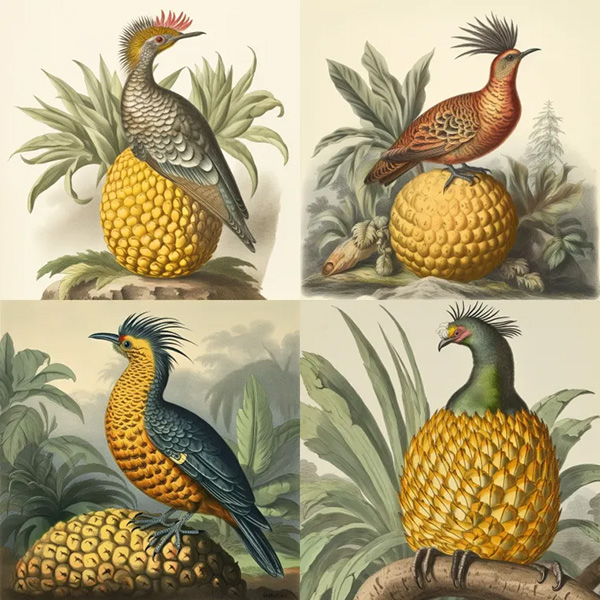
a naturalist illustration of a pineapple bird
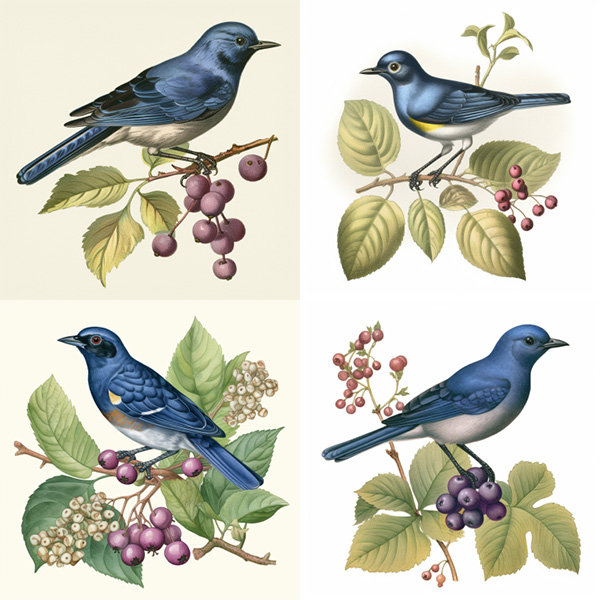
a naturalist illustration of a blueberry bird
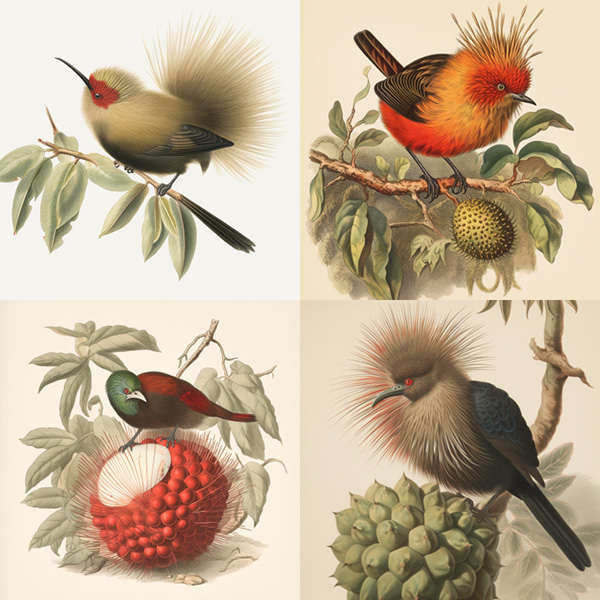
a naturalist illustration of a rambutan bird
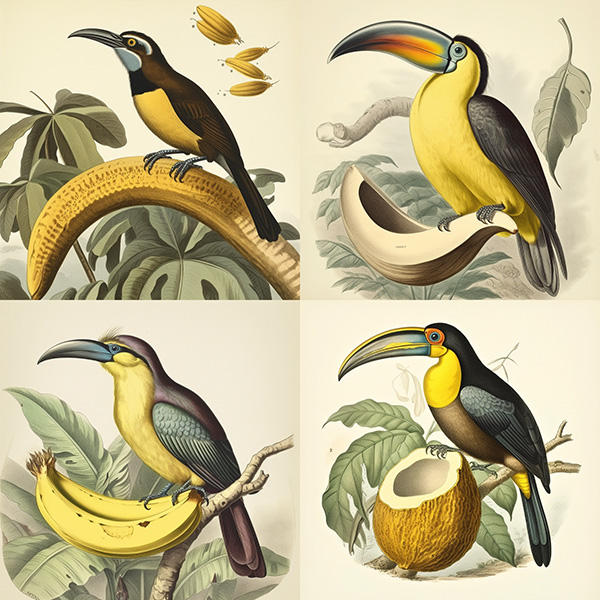
a naturalist illustration of a banana bird
Prompt Parameter Variations
Using the prompt /imagine prompt a naturalist illustration of a fruit salad bird --ar {3:2, 1:1, 2:3, 1:2} will create and process four Jobs with different aspect ratios:
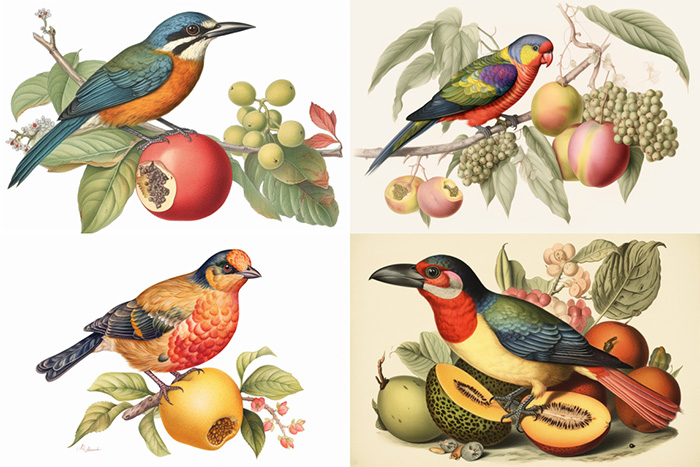
a naturalist illustration of a fruit salad bird --ar 3:2
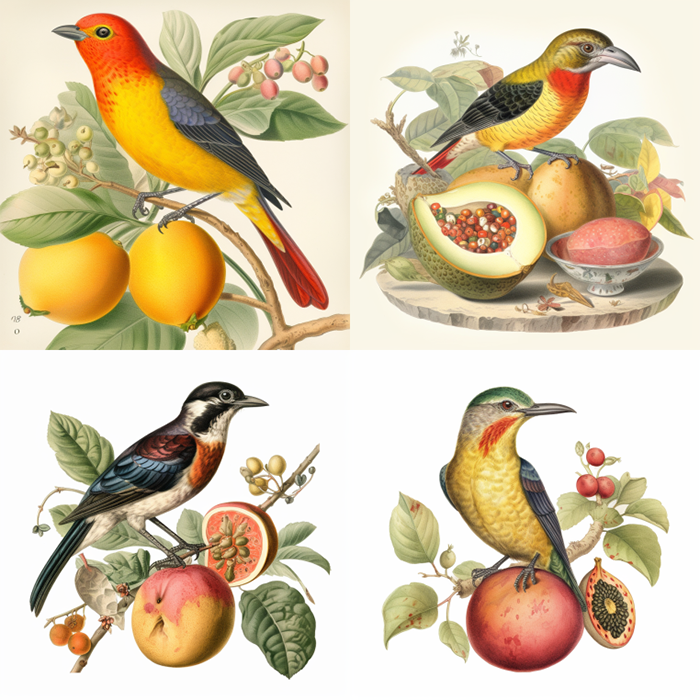
a naturalist illustration of a fruit salad bird --ar 1:1
Prompt Parameter Variations
The following prompt will create and analyze various parameter combinations to identify potential issues, and it will also provide suggestions for improvement.
1. Length Restriction
Length restriction can impact the quality of generated responses. An excessively short response may not fully answer the user's question or may lack context, while an overly long response can be verbose and provide too much unnecessary information. Striking the right balance in length is crucial for improving user satisfaction.
2. Temperature
Temperature is a parameter that controls the randomness of generated text. A high temperature (e.g., 1.0) results in more diverse and creative outputs, while a low temperature (e.g., 0.1) generates more focused and deterministic responses. Adjusting the temperature based on the context and purpose of the conversation can lead to better outcomes.
3. Top-k Sampling
Top-k sampling is a technique that limits the model's token selection to the top k most likely candidates. This can help filter out irrelevant tokens and reduce the chance of generating nonsensical responses. However, setting k too low might restrict the model's creativity and result in repetitive or overly generic responses.
4. Top-p Sampling
Top-p (nucleus) sampling is another method to control the randomness of text generation. It selects tokens based on a cumulative probability threshold (p) rather than a fixed number of top candidates (k). This approach can lead to more dynamic and adaptive sampling, but tuning the p value is essential to ensure coherent and informative responses.
5. Repetition Penalty
A repetition penalty can be applied to discourage the model from generating repetitive text. This can help avoid redundancy and improve the overall quality of the response. However, setting the penalty too high might lead to unnatural phrasing or the omission of important repeated information.
6. Custom Tokenization
Custom tokenization can be used to influence the way the model processes and generates text. This can help improve the model's understanding of specific domains, languages, or styles. However, it is crucial to test and validate the custom tokenization to ensure that it does not introduce errors or negatively impact the response quality.
Conclusion
Optimizing prompt parameter variations can significantly improve the quality and relevance of generated text. By understanding the impact of each parameter and adjusting them based on context and desired output, it is possible to create more effective and engaging conversational experiences.

